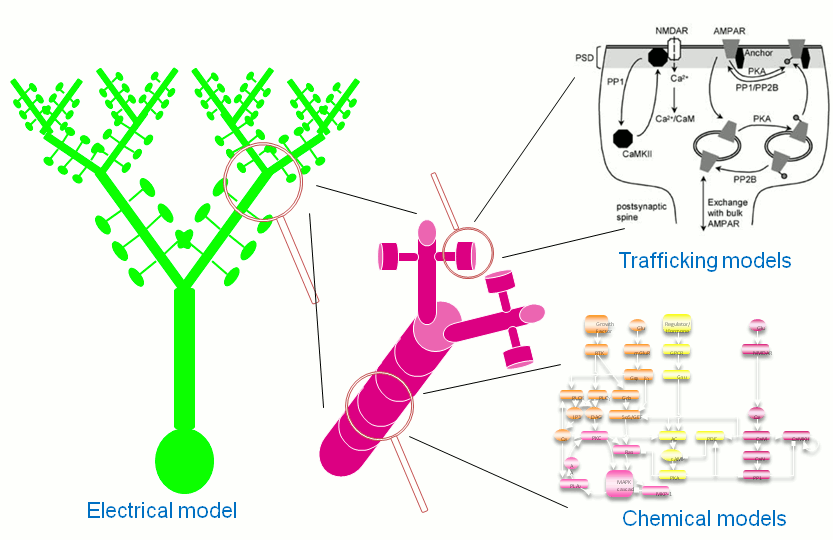What is MOOSE and what is it good for?¶
MOOSE is the Multiscale Object-Oriented Simulation Environment. It is designed to simulate neural systems ranging from subcellular components and biochemical reactions to complex models of single neurons, circuits, and large networks. MOOSE can operate at many levels of detail, from stochastic chemical computations, to multicompartment single-neuron models, to spiking neuron network models.
MOOSE is multiscale: It can do all these calculations together. One of its major uses is to make biologically detailed models that combine electrical and chemical signaling.
MOOSE is object-oriented. Biological concepts are mapped into classes, and a model is built by creating instances of these classes and connecting them by messages. MOOSE also has numerical classes whose job is to take over difficult computations in a certain domain, and do them fast. There are such solver classes for stochastic and deterministic chemistry, for diffusion, and for multicompartment neuronal models.
MOOSE is a simulation environment, not just a numerical engine: It provides data representations and solvers (of course!), but also a scripting interface with Python, graphical displays with Matplotlib, PyQt, and OpenGL, and support for many model formats. These include SBML, NeuroML, GENESIS kkit and cell.p formats, HDF5 and NSDF for data writing.
